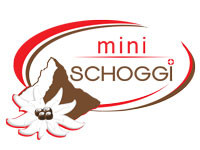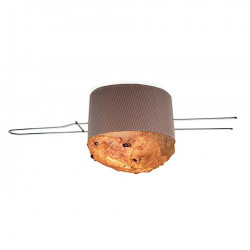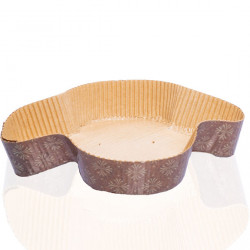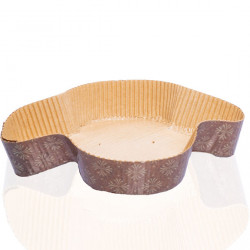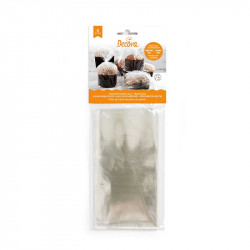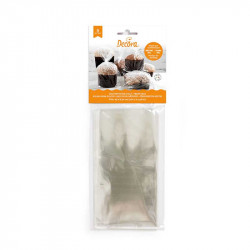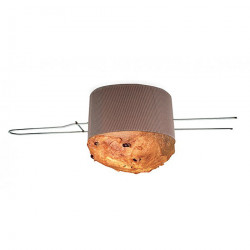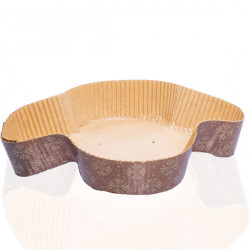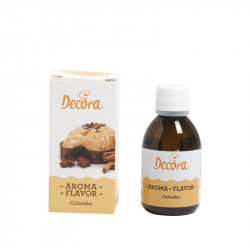-
MenuBack
-
Online Store
-
-
-
-
-
Leer
- Couverture
- Temperature control units
- Aids for chocolate
- Chocolate molds
- Praline fillings
- Chocolate ingredients
- Praline hollow body
- Chocolate colors
- Chocolate tattoos
- Chocolate packaging
- Bean to Bar
- Material for cutting chocolates
- Batons with Kirsch
- Airbrush for chocolate
- High Heels Accessories
- Textured films for chocolate
- Chocolate fountain & fondue
-
-
-
-
-
Kuchen & Torten
- Cakes Fillings & Ingredients
- Fondant & Marzipan
- Cakes tools
- Cake rings
- Silicone molds
- Baking pans for cakes
- Cake stand
- Cakes packaging
- Airbrush for cakes
- Sugar flowers accessories
- Cake Topper & Wedding Figurines
- Cakes dummies
-
-
-
-
-
-
-
-
-
-
-
-
-
-
-
-
-
-
-
-
-
-
-
Füllungen
- Baking chocolate
- Glucose & Sorbitol
- Cocoa beans
- Cocoa nibs
- Monin syrup
- Champagne & Alcohols
- Freeze dried fruits
- Cake & cake glaze
- Flours & baking ingredients
- Chocolate coating & chocolate
- Milk powder
- Granules
- Nuts & Nougat
- Fruit puree
- Creams & Fillings
- Egg yolk & egg white
- Fruit powder
- Special ingredients
- Fondant & Flower Paste
-
-
-
-
-
-
-
- Punching, cutting & embossing
- Mixing bowls & whisks
- Chocolate material
- Thermometer & Burner
- Gloves & Protective Material
- Smoothing & Modeling
- Roll out bar
- Dough scraper & horn
- (Flour) sieves
- Cake turntable
- Spatula & Spatula
- Silicone embossing molds
- Insert strips & cake slices
- Brushes & Tweezers
- Measuring cup
-
-
-
-
-
-
-
-
-
Ausstechformen
-
-
-
-
-
-
-
-
-
Courses
-
-
kurse
- Current courses
- Praline courses
- Chocolate courses
- Chocolate kiss course
- Macaron courses
- Cake courses
- Baking courses
- Patisserie courses
- Ice cream course
- Guetzli, Cookie & Confectionery Courses
- Bread courses
- Pasta courses
- Apéro course
- Cupcakes courses
- Éclair course
- Courses in Zurich - Adliswil
- Children's courses
-
-
- Team Events
- Hen Night
- Retail Store
-
About Us
-
-
-
DirectionsDownload relevant PDF now.
-
-
-
Recipes blog
-
-
Recipes Blog
-
-
-
Shipping and Payment
-
-
Versand/Zahlung/Impressum
-
-
- Online Shop
-
- Novelties
- Sale
- Chocolate and chocolates
- Couverture
- Temperature control units
- Aids for chocolate
- Chocolate molds
- Praline fillings
- Chocolate ingredients
- Praline hollow body
- Chocolate colors
- Chocolate tattoos
- Chocolate packaging
- Bean to Bar
- Material for cutting chocolates
- Batons with Kirsch
- Airbrush for chocolate
- High Heels Accessories
- Textured films for chocolate
- Chocolate fountain & fondue
- Couverture
- Gifts Cards
- Stencils & Stencils
- Cakes & Pies
- Ice cream
- Bread
- Macarons
- Hearty
- Recipe booklets & books
- Cupcakes
- Dessert
- Cake Pops
- Edible decorations
- Fillings & Ingredients
- Glucose & Sorbitol
- Cocoa beans
- Baking chocolate
- Cocoa nibs
- Monin syrup
- Champagne & Alcohols
- Freeze dried fruits
- Cake & cake glaze
- Milk powder
- Flours & baking ingredients
- Chocolate coating & chocolate
- Granules
- Nuts & Nougat
- Fruit puree
- Creams & Fillings
- Egg yolk & egg white
- Fruit powder
- Special ingredients
- Fondant & Flower Paste
- Food Colors
- Auxiliary means
- Spouts & piping bags
- Fondant, marzipan, flower paste
- Bakeware
- Aprons & Potholders
- Cookie cutters
- Season
- Candles
- Party accessories
- Tableware
Easter pigeons
There are 9 products.
Active filters
What is an Easter Dove?
An Easter dove often refers to a handmade dove made of paper or other material used as part of Easter decorations and ornaments. The Easter Dove symbolizes peace and is often placed in an Easter basket or bouquet. It is also often hung on Easter branches. The Easter Dove can also be a reference to the dove, which in Christian tradition is a symbol of the Holy Spirit.
Easter Dove is a typical Italian pastry at Easter. How was it invented?
The exact history of the origin of the Easter Dove pastry is not known, as it has been baked in Italy for centuries. However, there are several theories about its origin. One of the theories is that the pastry originated in Naples and was invented by Italian nuns in the 18th century.
The nuns are said to have baked the pastry in the shape of a dove to symbolize the message of the resurrection of Jesus Christ on Easter Sunday. The connection between the dove and Easter lies in Christian symbolism, where the dove represents peace, hope and the Holy Spirit.
Another theory is that the Easter dove pastry originated in Milan and from there made its way to other parts of Italy. It is believed that it was developed by the Milanese as an alternative form to the traditional Easter cake pastry.
Regardless of its exact origin story, Easter Dove pastry is now a popular Easter dessert in Italy and is often decorated with lemon icing and almonds. However, there are also regional variations of the pastry using different flavors and ingredients.
Where does the name Colomba come from?
The name Colomba comes from Latin and means "dove". It is used both as a first name and a surname and may have different origins. In some cases, the name can be traced back to Saint Columba of Iona, who played an important role in the Christianization of Scotland in the 6th century. However, the name Colomba is also common in other countries such as Italy, Spain and France and can have different meanings, not always related to the dove.
How was the Easter Pigeon / Colomba invented?
Legend has it that the Easter Dove or Colomba (Italian for "doves") was invented by an Italian baker named Angelo Motta. Angelo Motta was a well-known confectioner in Milan and opened his own bakery in 1919. He wanted to create an Easter pastry that was both delicious and symbolic. Inspired by the Colomba Pasquale, a traditional Italian Easter cake in the shape of a dove, he developed the Easter Dove.
Motta refined the recipe and used high-quality ingredients such as flour, butter, sugar and fresh eggs. The pastry was shaped like a dove and decorated with almond icing and frosting. The dove symbolizes the Holy Spirit and represents peace and fertility, making it a fitting pastry for Easter.
Colomba quickly became popular and is now one of the most famous Easter specialties in Italy. It is often given as a gift to friends and family and is an integral part of the Easter tradition.
How to make an Easter Dove / Colomba?
To make an Easter Dove or Colomba, you need the following ingredients:
- 500 g flour
- 150 g butter
- 150 g sugar
- 4 egg yolks
- grated zest of one lemon
- 20 g yeast
- 100 ml lukewarm milk
- 100 g candied orange peel
- 100 g candied lemon peel
- 1 pinch of salt
- powdered sugar for dusting
Step 1: Dissolve the yeast in the lukewarm milk and let it rest for 10 minutes until the yeast is active and starts to foam.
Step 2: In a separate bowl, mix the sifted flour with butter, sugar, egg yolk, lemon zest and salt. Add the yeast milk and knead everything into a dough. Cover the dough and let it rise in a warm place for about 2 hours, until it doubles in volume.
Step 3: Cut the candied orange and lemon peels into small pieces and add them to the dough. Knead the dough well again so that the candied fruit is evenly distributed.
Step 4: Grease a colomba mold with butter and spread the dough evenly in it. Cover the mold and let the dough rise for another 2 hours until it doubles in volume again.
Step 5: Preheat the oven to 180 degrees Celsius. Bake the colomba for about 40-45 minutes, until golden brown. Make sure the dough is baked all the way through by inserting a knife into the center of the colomba. If no dough sticks to it, it is baked.
Step 6: Remove the colomba from the oven and let it cool on a cooling rack. Finally, dust with powdered sugar and serve.
Now the homemade Easter Dove / Colomba is ready to be enjoyed!
What kind of errors can occur during the production of a Colomba?
When making a colomba, several mistakes can occur that affect the final result. Here are some possible mistakes:
1. Incorrect fermentation: If the dough does not rise properly or has not had enough time to ferment, the colomba can become flat and compact.
2. Too much or too little yeast: The right amount of yeast is crucial for good fermentation. Too much yeast can result in an unpleasant yeasty taste, while too little yeast can interfere with fermentation.
3. Incorrect Mixing of Ingredients: If ingredients are not mixed properly or added out of sequence, it can result in an uneven dough and poor texture.
4. Too little moisture: A dough consistency that is too dry can result in a dry, crumbly colomba. The dough should be moist enough to ensure a soft and moist texture.
5. Incorrect baking temperature or time: Baking the Colomba too much or too short can result in uneven browning, a crust that is too hard, or a raw interior.
6. Incorrect shaping: Proper shaping of the colomba is important to ensure even proofing and a beautiful appearance. Errors in shaping can lead to uneven rising and an unattractive shape.
7. Lack of surface decoration: the surface of the Colomba should be decorated with almonds or icing. Uneven or insufficient decoration can affect the appearance.
These defects can negatively affect the quality and taste of the colomba, so it is important to be attentive and accurate during production.
What are the main ingredients for a perfect Easter dove pastry / colomba?
The most important ingredients for a perfect Easter dove (Colomba) are:
1. Flour: High-quality wheat flour forms the basis of the yeast dough and ensures the right consistency.
2. Yeast: Fresh yeast or dry yeast is crucial for the fermentation and rising of the dough.
3. Sugar: Sugar provides the sweetness of the pastry and contributes to the taste.
4. Butter: Butter softens the dough and gives it a delicate consistency.
5.Eggs: Eggs are important components of the dough and provide a better binding.
6. Orange or lemon peel: The grated peel of an orange or lemon gives the pastry a fresh and fruity taste.
7. Vanilla sugar: Vanilla sugar gives the pastry a pleasant fragrance and taste.
8. Salt: A pinch of salt enhances the taste of the ingredients and rounds off the pastry.
9. Almonds or hazelnuts: Toasted and chopped almonds or hazelnuts are often added to the dough or glaze to give a crunchy texture and nutty flavor.
10. Sugar glaze: The glaze is usually made of powdered sugar and lemon juice mixed to a thick consistency. It gives the pastry a shiny surface and a sweet, fresh taste.
Depending on the recipe, other ingredients such as raisins or candied fruit can be added to further vary the pastry.
Why do people make Easter Doves / Colomba pastries only at Easter?
The tradition of making Easter Doves or Colomba pastries only at Easter comes from Italy, where they are an important part of Easter celebrations. The Easter Dove is a sweet yeast bread decorated with almonds and icing and baked in the shape of a dove. It is given and eaten at Easter to symbolize the resurrection of Jesus Christ.
In Italy, colomba has a long history dating back to the 6th century. Traditionally, the pastry is made with high-quality ingredients such as wheat flour, butter, sugar, eggs and candied fruit. It takes several days to prepare and ferment the dough before it is shaped into the dove and baked.
Since the Easter Dove is a traditional Easter pastry, it is only made and eaten during the Easter season. The shape of the dove symbolizes the Holy Spirit and the peace associated with the resurrection of Jesus Christ. The Colomba is often given as a gift to friends and family and enjoyed together during the Easter holidays.
Although the Easter Dove tradition originated in Italy, it is now celebrated in other countries and the pastry can be found in many European supermarkets and bakeries.
What kind of material is an Easter dove mold for Colomba made of?
A traditional Colomba di Pasqua, the Italian version of Easter cake, is usually made with a yeast dough. The dough consists of flour, sugar, butter, eggs, yeast, lemon or orange peel zest and often candied fruit or chocolate chips. The mold in which the cake is baked can be made of various materials, including aluminum, paper, ceramic or silicone.
What is the shelf life of Easter Dove pastry and how should it be stored?
The Easter Dove pastry can usually be kept for several weeks, provided it is stored properly. It should be stored in a cool and dry place, preferably in an airtight tin or package. This will keep it fresh longer and prevent it from drying out. It is advisable not to store the pastry directly next to other foods with an intense odor, as it can affect the taste of the pastry.
What errors can occur in the production of colomba or Easter pigeons?
There are several errors that can occur when making Colomba or Easter pigeons:
1. Incorrect dough preparation: If the yeast dough is not kneaded properly or not allowed to rise sufficiently, the dough may not rise properly and the pigeon will not be fluffy and airy.
2. Incorrect baking temperature or time: If the pigeon is baked too long or too short, or if the baking temperature is not set correctly, this may result in uneven cooking. As a result, the pigeon may be too dry, too moist, or not baked properly.
3. Lack of added ingredients: If important ingredients such as raisins, orange peel, or almonds are not added sufficiently or at all, it can affect the flavor and texture of the pigeon.
4. Problematic Shaping: The colomba has a characteristic pigeon shape that must be carefully observed during the shaping process. If the dough is not shaped properly, the dove may lose its shape during baking.
5. Missing or insufficient decoration: the Colomba is usually decorated with icing and almond flakes. If this decoration is not done properly or is not used enough, it can affect the appearance and taste of the dove.
To avoid these mistakes, it is important to follow the recipe instructions carefully and pay attention to the correct preparation and baking time.
